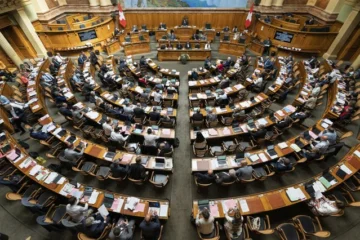Nowadays people from all over the world are faced with an enormous number of problems of very different kinds, which start from global starvation and end with overpopulation. This is a leading cause that makes them find new ways of changing their lives, their surroundings, everyday life habits and lifestyle on the whole. One of these examples is the Nordic model, which has captured sharp attention over a short period of time and become one of the greatest role models out of all existing political concepts.
It is firstly important and necessary to mention the historical side of the model emergence. As it usually happens, such an embodiment takes its origins from the crises, which was just the case for the Nordic model. After World War II people struggled mostly from economic fall, which paved the way for the creation of labour-employer agreement, later recognized as a “great compromise” in the 1930s. It served as the basis of social security and the organisation of the labour market and provided peaceful means of resolving the class conflict between capital and labour. Nevertheless, it outlined that farmers, who at that time provided the majority of the region’s and world’s income, as well as the labour parties that represented them, became the driving forces behind it. A framework for negotiations between employers and unions on issues like wages was also laid out in agreements like the Swedish Saltsjöbaden Agreement from 1938 and the Danish Kanslergade Agreement from 1933.
After going through several changes and facing numerous challenges for almost a decade, the Nordic Model includes to date such Northern European countries as Sweden, Finland, Norway, Iceland and Denmark. In the case of this exact term, it is justified to consider different regions at the same time. Despite the fact that all partner-countries are tied up by similar viewpoints on the themes like multiparty democracy, in particular party political model, culture of consensus, collective bargaining and the negotiation of conflict, each one of them represents its own model. It means that the Nordic model is a genuine concept for analysis as well as something that can be transferred or copied by other countries.
Due to the influence of social democratic party governance in Sweden and Norway, the term “social democracy” has become extensively used among political scientists and sociologists to refer to the Nordic model. The significance of social democracy in this context, according to sociologist Lane Kenworthy, refers to a form of capitalism based on the predominance of private property and market distribution mechanisms as well as a set of policies intended to ensure economic security and opportunities within the state.
While the model itself isn’t stable at all, it still has some central characteristics that help continue developing and growing in the right direction. For instance, these consist of a regulated working life, whereas rights and responsibilities are largely protected by law and agreements with established rules and methods for how employers and workers handle wage formation, conflicts and other challenges in the labour market. Other than that, they also concentrate on such themes as active labour market policies that are manifested through the goal of employment that is able to work for everyone. Full employment has long been an official objective of the Nordic countries, so a particularly high degree of employment is also one of the main characteristics of the Nordic model. Additionally, the Nordics have relatively big public sectors with a lot of areas of responsibility intervening in the citizens’ lives from the cradle to the grave. The welfare state is based on workers paying taxes and securing welfare benefits to all citizens. Free healthcare, education and income security are among the most important welfare benefits provided by the state. Nordic countries are also among the leading countries globally when it comes to female labour force participation. The Nordic economies have been small and open economies proving robust in times of recession and transformation.
The Nordic countries are also regularly found at the top of the rankings of the best countries to live in. It is justified by the World Happiness Report, which has used statistical analysis to determine the world’s happiest countries since 2002. In its 2021 update, the report concluded that Finland is the happiest country in the world. Furthermore, not surprisingly, the top seven happiest countries in the world for 2021 were all Northern European countries. Finland took top honours—for the fourth year in a row—with an overall score of 7.842, followed (in order) by Denmark (7.620), Switzerland (7.571), Iceland (7.554), the Netherlands (7.464), Norway (7.392), and Sweden (7.363). It makes sense on the statement that Nordic countries offer a higher quality of life and a high degree of trust, which is often referred to as the very glue that holds the model together. That goes for trust in the government, in the political system and in each other.
Like any possible deal, concept or policy, the Nordic model has its own pros and cons. Even regarding all modifications and adjustments that have been done during the time of its existence.
When it comes to the advantages of this model, it definitely stands out for a healthy cooperation between the government and the general public. Besides this, the state provides important social services, which are financed by everyone through relatively high taxes on income and services. A high degree of employment means many taxpayers and a high degree of trust. And on top of that, access to universal benefits makes the willingness to pay taxes high. The government in these countries also invests in human resources, investing in human capital like childcare, education and research, which at the same time increases opportunities for all people and provides a skilled and adaptable population. Likewise, there are strong institutions on both sides of the negotiating table. Collaboration between employers, workers and the government secures a balanced wage development, good working conditions and a fixed support framework.
While the Nordic model looks appealing and successful, even currently there are still challenges it continues to face. For instance, their welfare system is entirely dependent on an enough number of working people, so it means that the model is quite vulnerable to population changes such as an ageing population. In addition to that, the level of the workforce has fallen in recent years. This creates new challenges for a steady working life. New regulations and agreements in Europe also increase access to international labour, which often falls outside the agreements between Nordic employers and employees. Last, but not least, the gap between the wealthy and the needy grows at an increasing rate. This is a very discouraging point, because equality and equal opportunities are at the heart of the Nordic model.
The Nordic model idea has sparked interest among countries throughout the world during its operation and development, especially within European ones. At the same time, however, the model’s prosperity and “ideal look” has caused contradictions. On the one hand, it is true that it provides a template for smaller countries where citizens are more homogeneous in terms of their opinions and experiences yet live in poverty or repression as a result of Marxist government policies. On the other hand, this model is undoubtedly financeable only when it is tied to a highly productive market sector and is only possible in consensual, homogeneous and affluent societies with an extraordinary commitment to equality. On the whole, this model is both unique and similar to both capitalism and socialism in the sense that it derives its features from both models, but is very distinct from both in its totality.
The key question for all the countries that consider joining or applying the model’s main features in practice is to decide themselves whether it will really have a profound impact on the social, economic and political affairs. I, personally, would love to see a similar approach and lifestyle pattern in my motherland, Estonia, in the future, but I also imagine how much should be done for its realisation. So, as Cicero once said: “Aegroto dum anima est, spes esse dicitur (As long as there is life, there is hope)”!
References
Forskerforbundet. (2020). The Nordic Model in Eight Key Points. Vaadatud 14.11.2022 https://www.youtube.com/watch?v=O6ZQLsFQhnk
Iqbal, R., Todi, P. (2015). “The Nordic Model: Existence, Emergence and Sustainability”. Procedia: Economics and Finance 30: https://doi.org/10.1016/S2212-5671(15)01301-5 (külastatud 15. november, 2022).
McKay, A. (2020). “Scandinavian ‘Socialism’: The Truth of the Nordic Model”. Vaadatud 14.11.2022 https://www.lifeinnorway.net/scandinavian-socialism/#:~:text=The%20Nordic%20Model%20traces%20its,workers%20parties%20that%20represented%20them
McWhinney, J. (26.01.2022). “The Nordic Model: Pros and Cons”. Investopedia. Vaadatud 14.11.2022 https://www.investopedia.com/articles/investing/100714/nordic-model-pros-and-cons.asp
Moene, K.O., Wallerstein, M. (2006). “The Scandinavian Model and Economic Development”. Development Outreach, 18-20, 35.
Nordicsinfo. (2020). “The Nordic Model with Professor Mary Hilson”. Vaadatud 14.11.2022 https://www.youtube.com/watch?v=CsIGWDkH9zI
Nordic model. 2021. “Socio-economic model in the Scandinavian countries”, https://ru.wikibrief.org/wiki/Nordic_model (külastatud 15. november, 2022)
World Population Review. (2022). “Happiest Countries in the World 2022”. Vaadatud 15.11.2022 https://worldpopulationreview.com/country-rankings/happiest-countries-in-the-world


